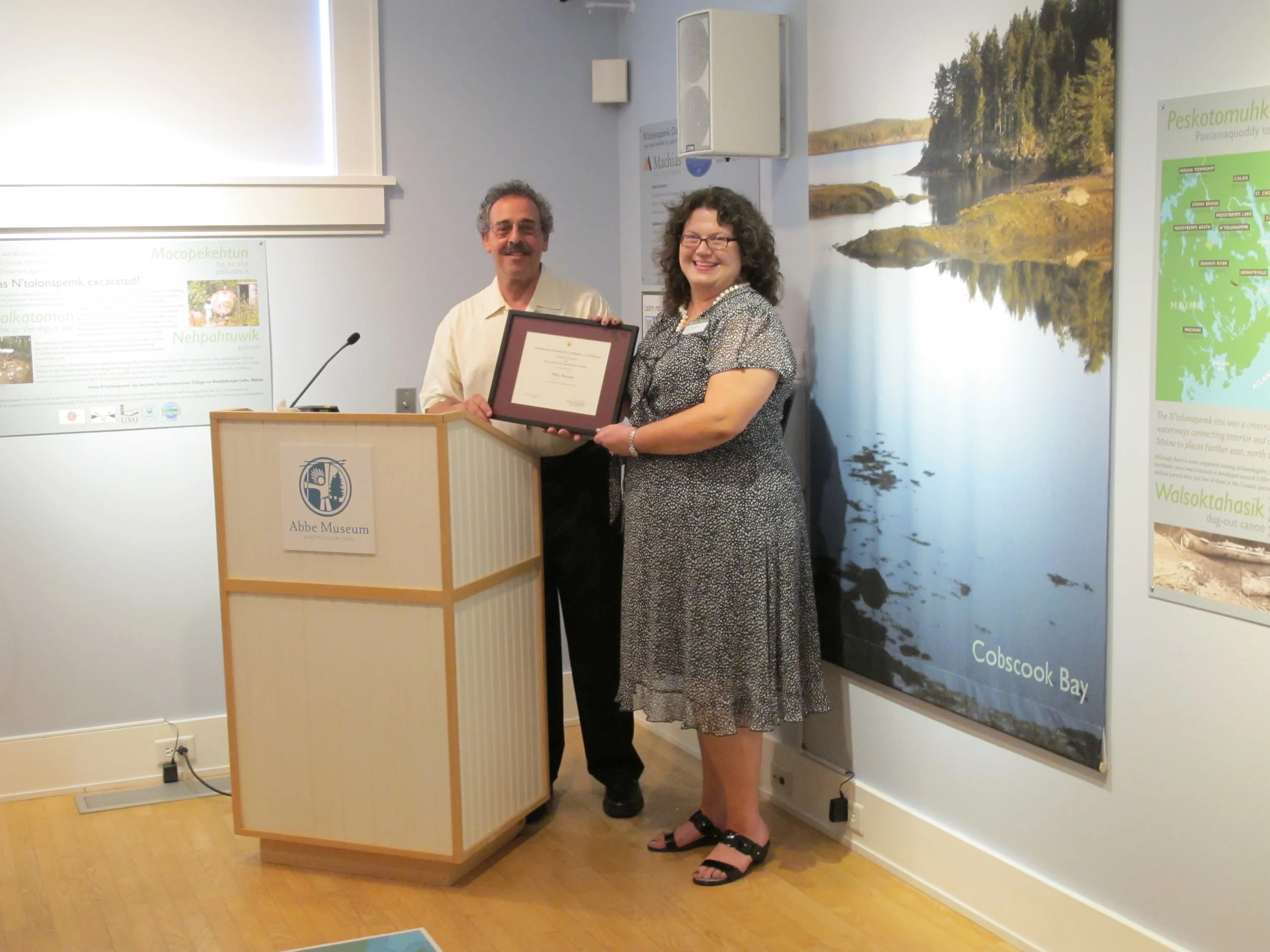Annual Meeting Highlights
/The Abbe's 2015 Annual Meeting was held on Wednesday, August 12th and we covered a lot of ground as we reported on fiscal year 2014, as well as our plans for the future. There were demonstrations by four Native artists, a sneak peek at our new strategic plan, and we honored an outgoing Trustee with the highest award bestowed by the Abbe.

Back in July, the Abbe named its 2015 Wabanaki Artist Fellows, recognizing three exceptionally creative individuals with a track record of achievement and the potential for significant artist contributions in the future: Donna Brown, Penobscot; Ganessa Frey, Penobscot; and Emma Soctomah, Passamaquoddy. These fellowships were made possible through support from Dawnland, LLC, the concessioner in Acadia National Park, who was in attendance at the Annual Meeting. All three Fellows gave demonstrations during the Annual Meeting, delighting guests with their art and answering any questions.

Ganessa Frey discussed basketmaking with Abbe supporters Joe and Cathy Gerstner.

Emma Soctomah admitted that artwork is very important to her, and she spends much of her time outside of school making baskets. She's off to the Santa Fe Indian Market this month to try and win some more awards.

Donna Brown discussed her traditional beadwork with Abbe Trustee Sandy Wilcox.
The fellowships awarded are intended to provide support for travel, lodging, and other costs associated with exhibiting at Indian art markets in Maine and New Mexico. Emma and Ganessa will attend the 2015 Southwestern Association for Indian Art’s Santa Fe Indian Market (SWAIA), and Donna attended the 2015 Native American Festival and Basketmakers Market last month.
Gabriel Frey, Passamaquoddy, also gave a basketmaking demonstration. A utility basketmaker, Gabe uses his family's traditional knowledge and style to create beautifully woven, sturdily built utility baskets that can be used for a variety of purposes.

Gabe Frey (far right) carries on the tradition, high quality, and style of his grandfather who taught him, while incorporating his own individual aesthetic, forms, and decorative weaves.
The Golden Trowel Award, the highest award bestowed by the Abbe, was presented to Art Spiess for his invaluable contributions in making the Abbe Museum's annual Field school happen. This school has been an integral part of the Abbe’s archaeological work since the 1980s, and is one of the most significant ways we teach about archaeology and engage people in this important way of learning more about Wabanaki history and culture. The success of the field school over the years has been due in large part to the outstanding contributions of archaeologists, anthropologists, historians, and educators from around Maine. And for the past nine years, nobody has been as essential to that success at Art Spiess.

Art received his PhD in Anthropology from Harvard University in 1978, and he began his career at the Maine Historic Preservation Commission that same year. Art has been on the Board of The Maine Archaeological Society for more than 20 years, and he serves as the Editor of Archaeology of Eastern North America for the Eastern States Archaeological Federation.
Art has generously given his time and expertise to the field school, leading this outstanding annual learning experience. He has also been key in helping the Abbe keep our practices and policies around archaeological research and collections up-to-date with current standards and legal requirements. He has guided archaeology in Maine for over four decades of work at the Maine Historic Preservation Commission, and his depth of knowledge has been essential to the success of the field school.

Abbe's Director of Collections & Interpretation presented Art with the Golden Trowel Award.
The night ended on an exciting note: the Abbe's new strategic plan. This plan will guide the next phase of the Museum’s growth and development, from its adoption in 2015, through the next five to seven years. Our mission hasn’t changed, but our vision has a new focus:
The Abbe Museum will reflect and realize the values of decolonization in all of its practices, working with the Wabanaki Nations to share their stories, history, and culture with a broader audience.
There are three phases to the plan, and phase one will kick-off very ambitiously this fall. The Abbe's President & CEO, Cinnamon Catlin-Legutko, gave a sneak peek of each goal, which will include a permanent exhibit, new and improved web presence, expansion of our dialogue-based programming, development of an archaeology advisory committee, an online collections database, and producing the Abbe Museum Indian Market. An official plan will be rolled out very soon!
A very big thank you to all those who came to the Museum on Wednesday to celebrate with us! We can't wait to see what happens next!







